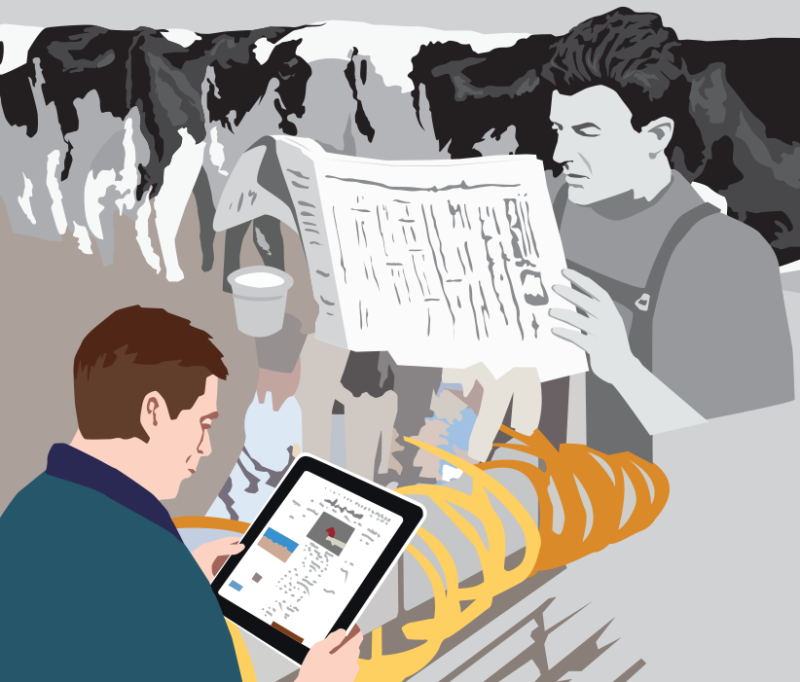On Aug. 5, 2013, a televised event was held in London that, not long before, would have felt like it came from a sci-fi novel: Food critics tasted the first lab-grown hamburger.
While lab-grown, or “cultured,” meat has been studied since the 1950s, research and investment in the field have grown exponentially since the turn of the millennium. In 2001, NASA began conducting experiments with the objective of allowing astronauts to produce meat in space. Since then, numerous private companies have joined the synthetic meat race, as various countries, from the U.S. to Israel, grant approval for their entry into the market. In December 2020, a restaurant in Singapore became the first establishment to serve lab-grown meat to patrons. One cultured meat company, New Harvest, is calling it a "post-animal bio-economy."
Until recently, creating muscle growth under laboratory conditions required fetal bovine serum (FBS) extracted from unborn calves. The cost of this liquid is high – about $1,000 per quart – and prevents the claim that the cultured meat has been produced “animal-free.” However, with such heavy investment in the field, gains have been made quickly. This year, wheat proteins were used to create fat and muscle tissue, which may eventually solve some of the associated drawbacks of cultured meat production.
If there’s something that I learned getting older, it’s this: The fact that I can’t imagine something happening has no bearing at all on whether it will occur. (I thought bottled water and Facebook would never take off.) It’s probably easy to see lab-grown meat as a pie-in-the-sky idea that will only lead to wasted research funds. However, I think the farming industry needs to pay attention. It may have some choices to make.
In the modern era, most people cite the 1977 debate between author Wendell Berry and former Secretary of Agriculture Earl Butz as the prototypical argument between small and large agriculture. Berry contended that farming should be good to the land, the farmer and the community, while Butz famously called upon farmers to plant “fencerow to fencerow.” Despite the debate’s recognition in contemporary discourse, it is a discussion that is much older and likely started with the first farmers. In literature, it can at least be traced back to Varro’s De Re Rustica around 40 BC in the Roman Empire. In De Re Rustica, Gaius Fundanius and Gnaeus Tremelus spar over whether it is the nature of farming or its output that is more important, sounding very much like Berry and Butz 2,000 years later. Apparently, it’s a question inherent to the act of farming.
Some readers will disagree, but I believe the loss of the small and mid-size farm is not a symptom of modernity. It was not surprising because economist Williard Cochrane predicted it in the 1950s, and it was not inevitable because it can be linked to specific political decisions in the last 100 years. It was not about being big enough to feed the world because excess milk gets dumped into manure lagoons while someone starves somewhere else. It was not that technology got better because there was always a decision how to use that technology. In the end, it’s that in the U.S. the small farm lost the debate.
Lab-grown meat is coming. The very idea of it repulses me, and I plan on never trying it. I’m confident most readers of this publication feel the same way. Even worse, the term “post-animal” is as off-putting as it is frightening. However, there will be a future generation, maybe not too far away, who will be comfortable with the concept. They’ll start eating cultured meat, having already been disconnected from where food comes from. When that happens, agriculture is going to need a counterargument. It’s going to need to defend why an actual cow raised by an actual farmer is better than that made by people in white coats.
When that moment comes, whenever it is, agriculture’s best testimony is going to be the small farmer – the family farm that is a steward of the land, environmentally conscious, supporting the rural community it is situated in and that does the best it can for the people and animals found on it. There’s a cultural, and even economic, defense that has always been in place for the small and mid-size farm, and it’s going to be especially relevant when it becomes necessary to explain to people why they should eat traditional meat. The small farmer has struggled in the U.S. The dairy industry alone lost 40,000 farms between 2002 and 2020 as expansion became crucial to survival. However, to stop making the argument that small farms should be supported to where they can become viable again is shortsighted and probably fails to recognize what is coming down the road.






